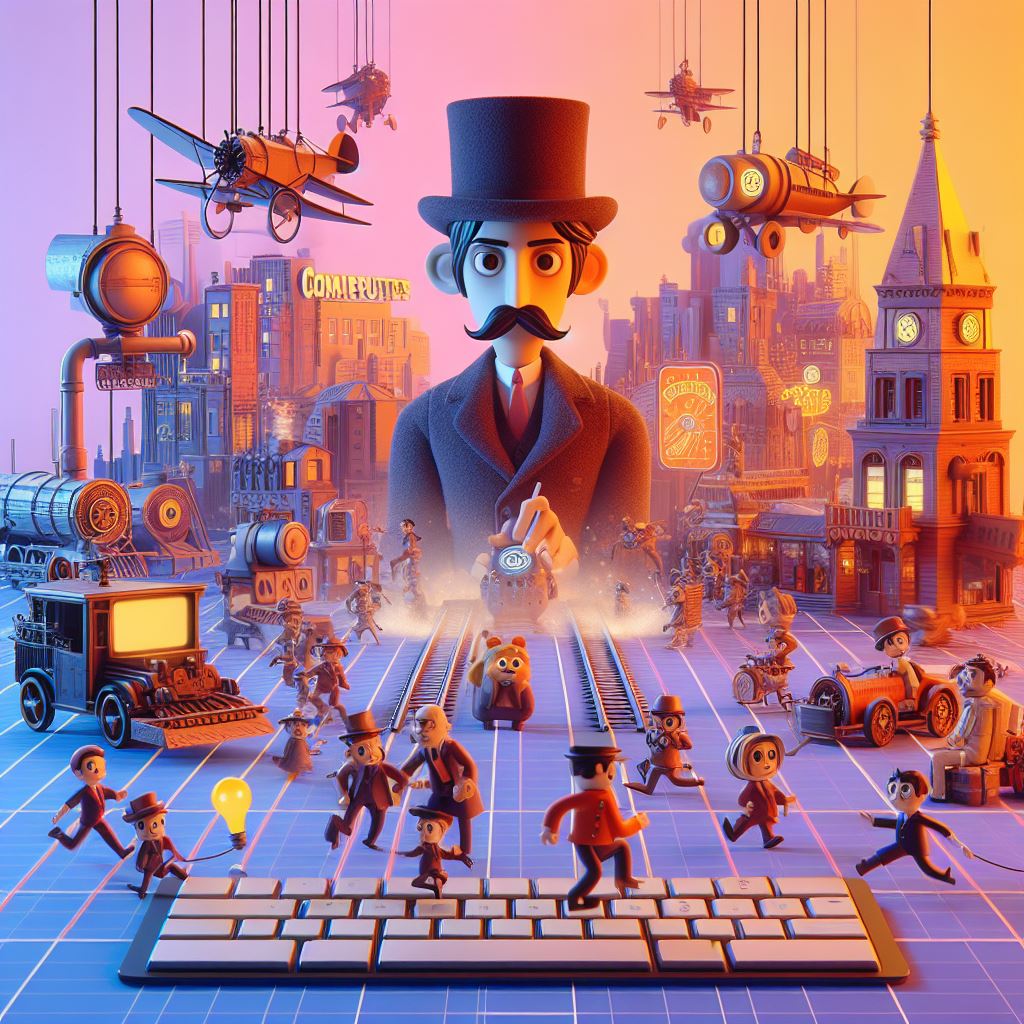The Evolution of 3D Animation: From Traditional to Digital Mastery
The mesmerizing world of 3D animation has undergone a revolutionary journey, transforming from traditional techniques to the pinnacle of digital mastery. This evolution has not only shaped the way we perceive animated storytelling but has also opened new dimensions for creativity and expression. In this comprehensive exploration, we’ll delve into the fascinating history of 3D animation, tracing its origins, key milestones, and the transformative impact of technology on the craft.
1. The Genesis of 3D Animation
To understand the evolution, we must first rewind to the inception of 3D animation. The early days were marked by pioneering efforts in the 1960s, with the advent of computer graphics and mathematical modeling. Icons like Ivan Sutherland and his groundbreaking work on Sketchpad laid the foundation for what was to come. As technology progressed, the 1970s and 1980s witnessed the birth of primitive 3D animation in films and television, setting the stage for a seismic shift.
2. Traditional Techniques: Stop-Motion and Claymation
Before the digital era, animators relied on traditional methods such as stop-motion and claymation to bring characters to life. Iconic films like “The Nightmare Before Christmas” and “Wallace and Gromit” showcased the painstaking craftsmanship involved in frame-by-frame animation. These techniques contributed to the charm of animation but were labor-intensive and time-consuming.
3. Emergence of Computer-Generated Imagery (CGI)
The advent of CGI in the 1980s marked a turning point in 3D animation. The groundbreaking film “Tron” and the iconic Genesis music video “Land of Confusion” showcased the potential of computer-generated imagery. However, it wasn’t until the 1990s that CGI truly began to dominate the animation landscape with Pixar’s “Toy Story,” the first-ever feature-length computer-animated film.
4. Rise of Digital Animation Studios
The 21st century saw an explosion of digital animation studios, each pushing the boundaries of technology and storytelling. DreamWorks Animation, Illumination Entertainment, and Blue Sky Studios joined Pixar in captivating audiences with visually stunning and emotionally resonant 3D animated films. The competition spurred innovation, leading to advancements in character design, rendering techniques, and realism.
5. Technological Advancements: Realism and Virtual Reality
As computing power continued to surge, 3D animation entered a phase of unparalleled realism. Films like “The Jungle Book” (2016) and “The Lion King” (2019) showcased the seamless integration of live-action and CGI, blurring the lines between reality and animation. Virtual Reality (VR) also emerged as a game-changer, offering immersive experiences and new storytelling possibilities.
6. Challenges and Ethical Considerations
With the rise of deepfake technology and concerns about ethical implications, the evolution of 3D animation also brought about challenges. The ethical use of technology, the impact on employment in the animation industry, and the need for responsible storytelling became critical considerations for creators and audiences alike.
7. The Future of 3D Animation
Looking ahead, the evolution of 3D animation shows no signs of slowing down. Advances in artificial intelligence, real-time rendering, and interactive storytelling promise to redefine the medium once again. The integration of machine learning for character animation and the exploration of non-linear narratives are likely to shape the future landscape of 3D animation.
8. Exploring Cultural Impact
Beyond entertainment, 3D animation has made significant cultural impacts. It has transcended borders and languages, becoming a universal language of storytelling. From the whimsical worlds of Disney to the immersive universes of anime, 3D animation has influenced generations and ignited imaginations worldwide.
9. Education and Training
With the growing demand for skilled animators, education and training have become integral to the evolution of 3D animation. Institutions and online platforms offer comprehensive programs, empowering aspiring animators with the tools and techniques needed to succeed in this dynamic field. Moreover, collaborations between academia and industry foster innovation and talent development, ensuring a steady stream of creative minds in the animation sphere.
10. Environmental and Social Implications
As technology continues to evolve, it is essential to consider the environmental and social implications of 3D animation. The carbon footprint of rendering farms, the e-waste generated by obsolete hardware, and the equitable representation of diverse voices in animated storytelling are just a few areas that require attention. Sustainable practices and inclusive storytelling can pave the way for a more responsible and ethical animation industry.
Conclusion:
The journey from traditional to digital mastery in 3D animation is a testament to human creativity and technological innovation. From humble beginnings in computer labs to the immersive experiences of the digital age, the evolution of 3D animation has captivated audiences worldwide. As we navigate the dynamic landscape of technology and storytelling, the future promises even more awe-inspiring possibilities for this ever-evolving art form. With continued innovation, collaboration, and a commitment to ethical practices, 3D animation will continue to inspire, entertain, and shape the imagination of generations to come.
Check this out:
A Comprehensive Guide to Unleashing Creativity Game developing with ready-to-use assets The role of 3D Artist Insights into indie game development The Harmony of Gaming – Music and Sound Effect The World of Sound Designer Lab MDK StoreSummary
In summary, the evolution of 3D animation traces back to the 1960s, progressing from early computer graphics to traditional stop-motion techniques and the rise of computer-generated imagery (CGI) epitomized by Pixar’s “Toy Story” in the 1990s. Digital animation studios like DreamWorks and Illumination Entertainment have propelled the medium forward, pushing boundaries in realism and integrating virtual reality. Ethical considerations around deepfake technology and storytelling have emerged alongside technological advancements. Looking ahead, the future promises further innovation through artificial intelligence and interactive storytelling, while education and collaboration continue to shape the landscape. 3D animation’s cultural impact, environmental concerns, and commitment to inclusivity underscore its role as a universal storytelling medium, captivating audiences globally.
